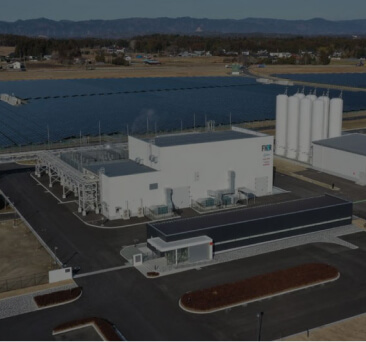Decarbonization is one of the best ways to mitigate climate change by taking steps to reduce greenhouse gas emissions. These efforts also aid in the energy transition by decreasing the use of fossil fuels, a big carbon emitter, in favor of renewable energy sources. Organizations can take a few different approaches as they move toward carbon-neutral solutions.
Why decarbonization matters
Before discussing the strategies, it’s important to understand why decarbonization matters. Greenhouse gas emissions have a big impact on the climate by altering the atmosphere through a process known as the greenhouse effect, where heat trapped by greenhouse gases are unable to escape, causing the excess heat to warm the planet. Case in point: this summer proved to be the hottest on record globally, highlighting how carbon emissions are raising the Earth’s temperature. This trend could continue if organizations don’t take decarbonization seriously.
Not only do carbon emissions contribute to a warming globe, but they can also lead to more extreme and frequent weather events. These events, like hurricanes, can be life-threatening to citizens, causing them to lose power, limit access to clean drinking water, and potentially leave people displaced.
Many global leaders understand what could happen if they don’t take collective action to decarbonize. One of the most effective and well-known decarbonization initiatives is the Paris Agreement. Signed by 196 countries in 2016, this legally binding international treaty aims to limit global warming to below 2°C above pre-industrial levels. The agreement outlines the economic and social changes countries must follow to curb emissions. Through this worldwide partnership, countries are supporting one another in their low-carbon solutions as they work together to achieve carbon neutrality – the ultimate goal of decarbonization.
Strategies to decarbonize
While the aim of decarbonization is relatively straightforward, there are a few different ways organizations can approach achieving net-zero emissions.
Toshiba America Energy Systems offers a number of power generation solutions to fit an array of needs, including:
- Geothermal Power Generation – generates electricity by tapping into the Earth’s heat, which is a clean, renewable resource that helps to reduce one’s carbon footprint
- Hydro Power Generation – generates electricity by using water flowing from a high to low elevation; this is another eco-friendly energy source that can decrease the amount of carbon emissions compared to using fossil fuels
- Steam Turbine Generators – creates electricity by converting energy from steam, which can come from geothermal power or fossil fuels; it’s a great option to reduce greenhouse gas emissions in industrial energy applications
- Carbon Neutral Solutions – creates electricity by capturing, storing, and repurposing carbon dioxide emissions, lowering one’s overall carbon footprint
These solutions can stand alone or work together to provide organizations with more sustainable energy generation options as they work to cut down on greenhouse gas emissions. In addition to these bigger strategies, organizations can also take smaller steps as they work to decarbonize.
Another smaller scale method is switching from using fossil fuels to renewable energy sources, known as the energy transition. Solar and wind are two popular renewable energy sources that can power whole communities. Some corporate organizations are also making this switch as part of their climate pledges as they work to reduce their carbon footprint. To make the most of these renewable energy sources, organizations can pair solar panels, for example, with battery storage systems that store excess power to be used later or sold back to the utility company.
Smaller steps to take on the decarbonization journey
It can be a big undertaking for organizations to switch energy sources, so leaders must not ignore the smaller steps they can take as they work to decarbonize. One strategy is to improve the energy efficiency of buildings and transportation.
Buildings are responsible for 39% of global carbon emissions, as they use large amounts of heating, cooling, and lighting. If we’re serious about decarbonization, this sector is one of the first places to implement carbon neutral strategies. There are easy swaps building operators can make in their pursuit of decarbonization, like automated light switches and heating and cooling systems that turn lights off or alter the thermostat based on time of day or use of rooms. Another switch is to replace current sinks and toilets in the building with low-flow alternatives that conserve water.
Like buildings, transportation is another area that needs a serious makeover. Only 7% of U.S. residents own an electric vehicle (EV), according to a recent Gallup Poll. Electric and hybrid vehicles are one of the best ways to eliminate the pollutants that gas-powered vehicles emit into the atmosphere. At the local government level, leaders can work to replace their fleet of public buses with electric buses and can identify spots around the community to build EV charging stations for residents to use.
Strategies to decarbonize can be big or small, as evidenced by the different approaches leaders can take as they transition toward carbon neutrality. Regardless of how big or small a change may be, they all work to achieve the same goal of reducing carbon emissions.
Decarbonization in progress
Decarbonization is one of the most important things we can do to help decrease the effects of climate change. It
refers to the strategies and efforts that individual people, organizations, and governments take to reduce carbon emissions. By understanding why it matters and what can be done, we’re all on the right path toward a net-neutral world.









